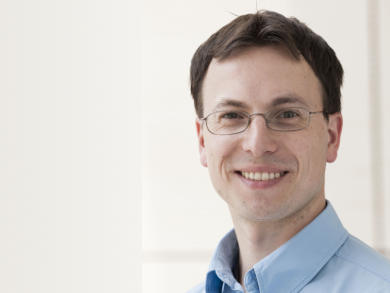The most important prize for early career researchers in Germany, the Heinz Maier-Leibnitz Prize, has been awarded on May 5, 2015, in Berlin by the Deutsche Forschungsgemeinschaft (DFG, German Research Foundation).
The selection committee has chosen ten researchers to receive the prize. The award is intended to assist young researchers in furthering their scientific careers and comes with € 20,000 for each recipient.
The 2015 Heinz Maier-Leibnitz Prize recipients are:
- Marian Burchardt (39), Empirical Social Research, Max Planck Institute for the Study of Religious and Ethnic Diversity, Göttingen, used investigations into religious initiatives in South Africa to examine links between religion, sexuality, and biomedicine concerning HIV/AIDS.
- Jessica Burgner-Kahrs (34), Mechatronics, University of Hanover, is conducting research into how robots can be even better utilized for surgical applications.
- Pavel Levkin (34, pictured), Polymer Chemistry, Karlsruhe Institute of Technology (KIT), has synthesized polymer systems that regulate the interaction between living cells and modified surface structures. Levkin developed molecular chip technology for this purpose, which enables cells to be effectively manipulated.
- Soeren Lienkamp (35), Medicine, University of Freiburg Medical Center, focuses on the small tubes in the kidneys – the tubules – in which urine is produced. He uses Xenopus laevis tadpoles as a model organism to see to what extent directional cell migration is responsible for tube formation.
- Thomas Niendorf (35), Materials Engineering, TU Bergakademie Freiberg, investigates how the manufacturing process and newly developed microstructures in materials create certain characteristics, e.g., resilience to damage. His dissertation focused on how damage develops under cyclical and thermal stress.
- Stephan Packard (36), Media Culture Studies, University of Freiburg, focuses on symbolism and culturally constructed coding in social coexistence, from quite elementary communication of feelings and emotions to the controlled use of symbols in propaganda or fiction.
- Susanne Paulus (32), Ancient Near Eastern Studies, University of Münster, was the first person to make Akkadian, an extinct language that was spoken in ancient Mesopotamia, accessible and also present an assessment from an economic historical and legal historical perspective.
- Cynthia Sharma (35), Infection Biology, University of Würzburg, developed a sequencing method – the differential RNA-seq method – and applied this method using the example of Helicobacter pylori, a rod-shaped bacterium which is blamed for some gastrointestinal diseases.
- Sarah Weigelt (35), Psychology, University of Bochum, uses behavioral experiments and modern brain-imaging techniques to examine how the human visual brain develops. In addition to visual development, she is also researching atypical vision in children with autism.
- Xiaoxiang Zhu (30), Geodesics, Technical University of Munich, plans to optimize remote sensing data and provide the foundations needed to design new satellite sensors on which future Earth observation missions can depend.
- Deutsche Forschungsgemeinschaft (DFG; German Research Foundation), Bonn, Germany




